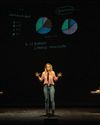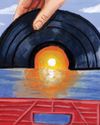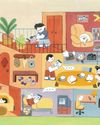Only a fraction of the world’s yeast species have been discovered. The remainder could hold the keys to ending disease, climate change, and bad beer.

THE OAK savannah of Ontario’s Pinery Provincial Park is humid, sunny, and still. The only visible movement comes from microbiologist Marc-André Lachance, who is sniffing a tree trunk. With his beard, shades, and Tilley hat, Lachance looks like a cross between a birder and a member of ZZ Top. His nose has picked up a distinctive tarry odour, like carbolic soap. “Aha, flux city!” he declares, then carefully scrapes a sterilized metal spatula against a slime flux — a cluster of dark sap from a wound to the bark — to get the invisible beings he is after. Lachance is hunting wild yeasts, and he’s one of best hunters in the world.
Lachance is sometimes referred to as “the OG of yeasts” by a younger generation of researchers, though his only vanity seems to be his licence plates: YeaSTS, emphasis on the plural. He has spent the past forty years stalking these single-celled organisms — which are members of the fungi kingdom — from Australia to Brazil, Malaysia to Belize, researching how insects and plants interact to foster yeast habitats. Where vacationers bring skis or snorkels, Lachance carries sampling vessels, bug dope, soft tweezers for insects, hard ones for cactus spines, and the strongest drugstore reading glasses available (“like a microscope around your neck,” he explains). Modern yeast hunters also travel with permits; in an era of bioprospecting, legal conflicts over microbial ownership are rendering visible the value of the invisible, and yeasts have become big business.
This story is from the April 2019 edition of The Walrus.
Start your 7-day Magzter GOLD free trial to access thousands of curated premium stories, and 8,500+ magazines and newspapers.
Already a subscriber ? Sign In
This story is from the April 2019 edition of The Walrus.
Start your 7-day Magzter GOLD free trial to access thousands of curated premium stories, and 8,500+ magazines and newspapers.
Already a subscriber? Sign In

Invisible Lives
Without immigration status, Canada's undocumented youth stay in the shadows

My Guilty Pleasure
"The late nights are mine alone, and I'll spend them however I damn well please"

Vaclav Smil Is Fed Up
The acclaimed environmental scientist is criticizing climate activists, shunning media, and stepping back just when we need him most

It's Time for a Birth Control Revolution
What the pill teaches us about the failure - and future - of women's health care

Would You Watch a Play about Hydro Electricity?
How documentary theatre struck a chord in Quebec

Still Spinning
One record chain has bet big on a new appetite for physical media

Just So You Know, I Love My Mother
In many ways, multi-generational living makes sense. But that doesn't make it easy

Art of the Steal
Why are plundered African artifacts still in Western museums?

Canada in the Middle
What role can we play in easing the war in Gaza?
Canadian Multiculturalism: A Work in Progress
As we mark fifty years since the adoption of Canada’s federal multiculturalism policy, human rights advocate AMIRA ELGHAWABY celebrates its merits and reflects on the work that is yet to be done when it comes to inclusion, acceptance, and fighting systemic racism in our country.